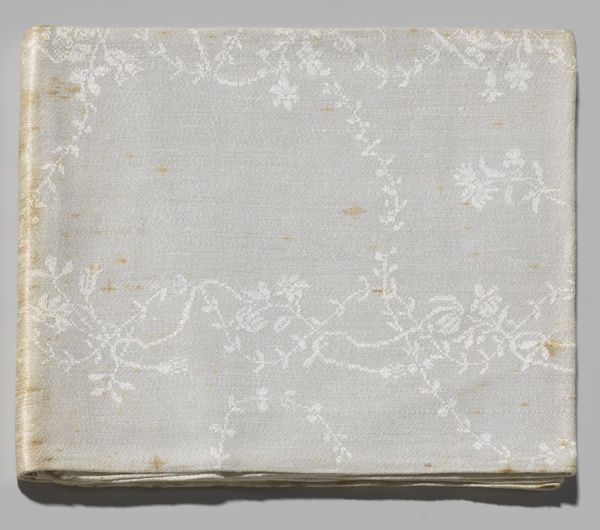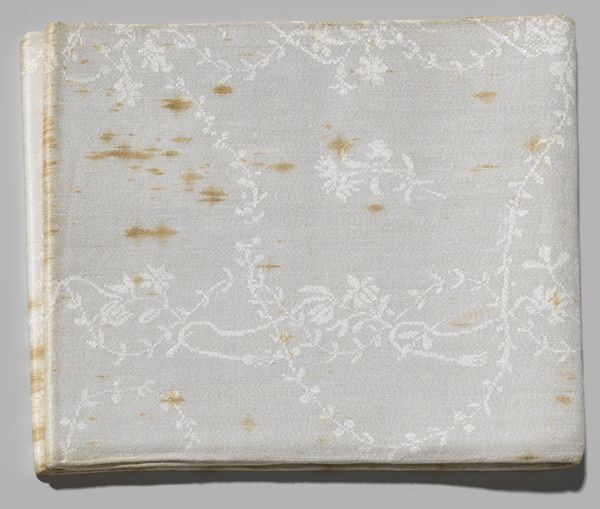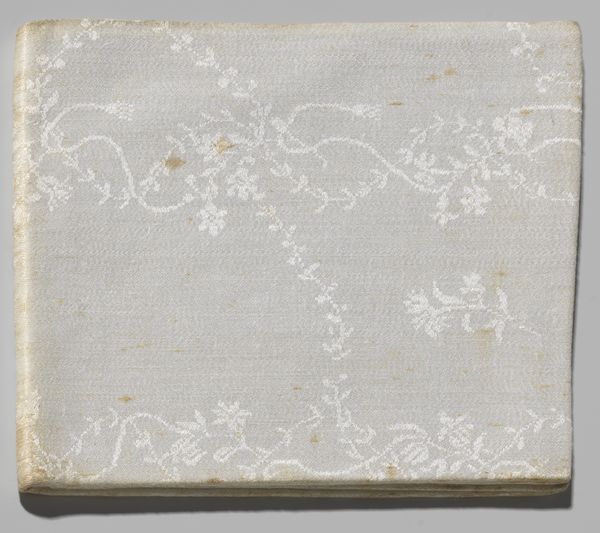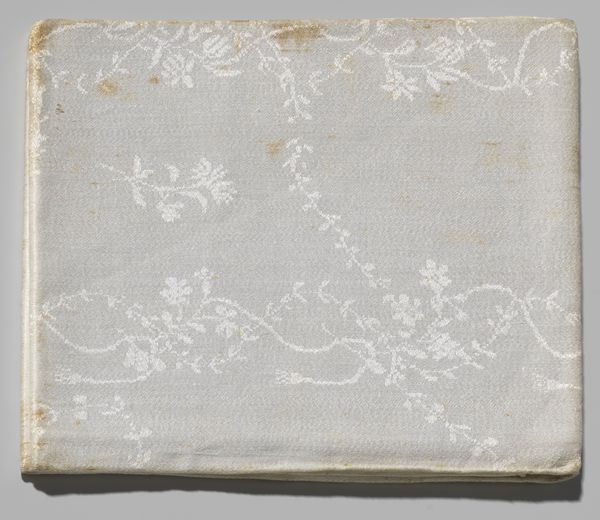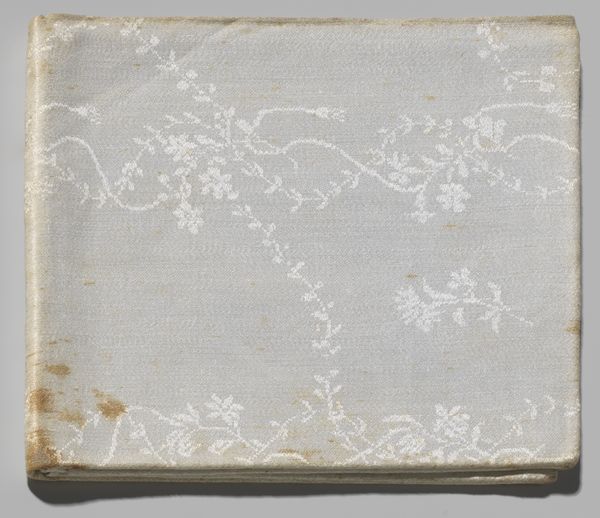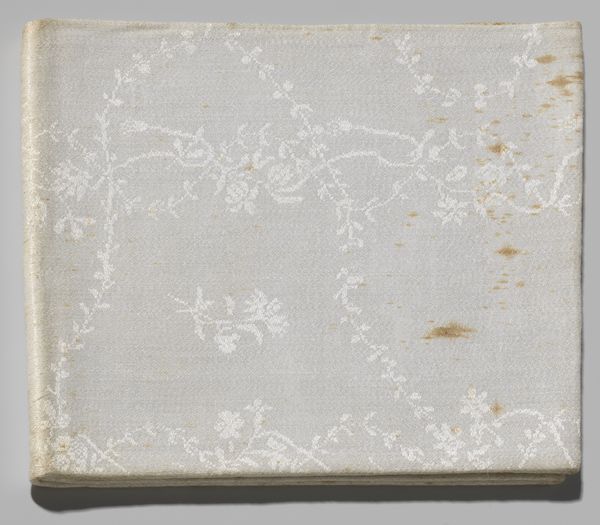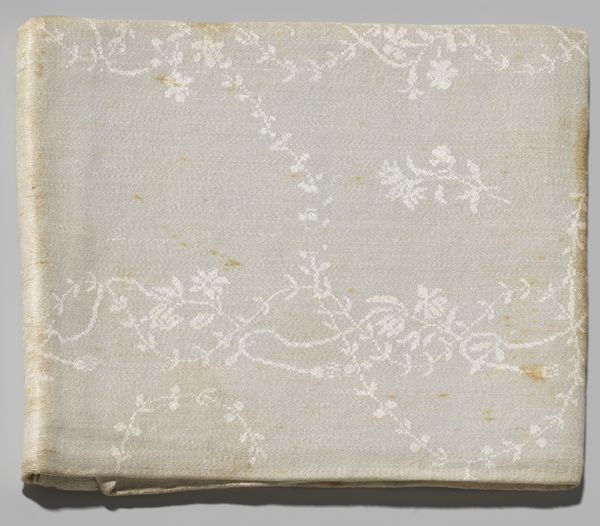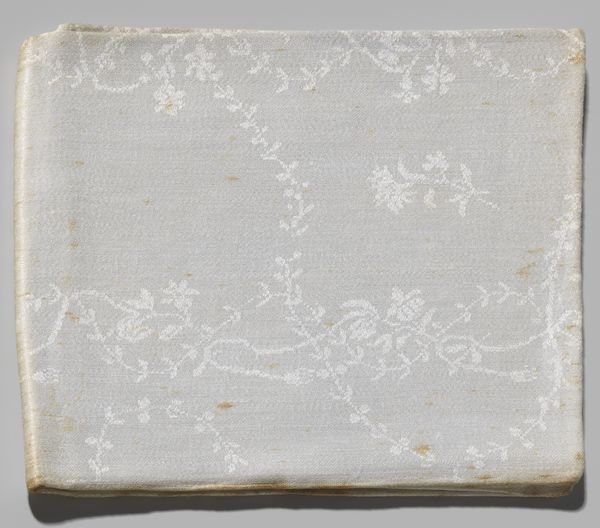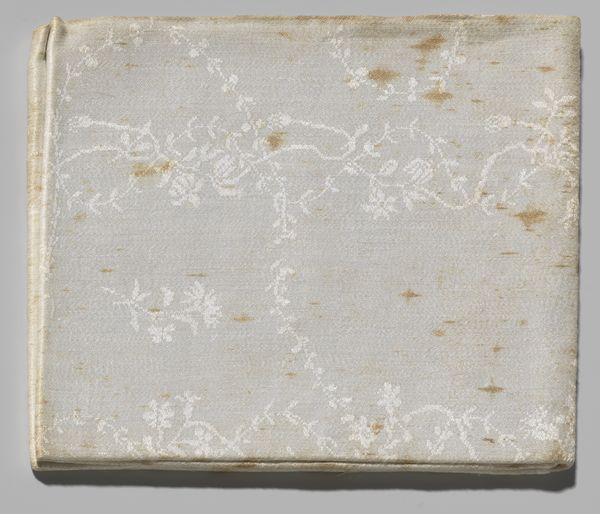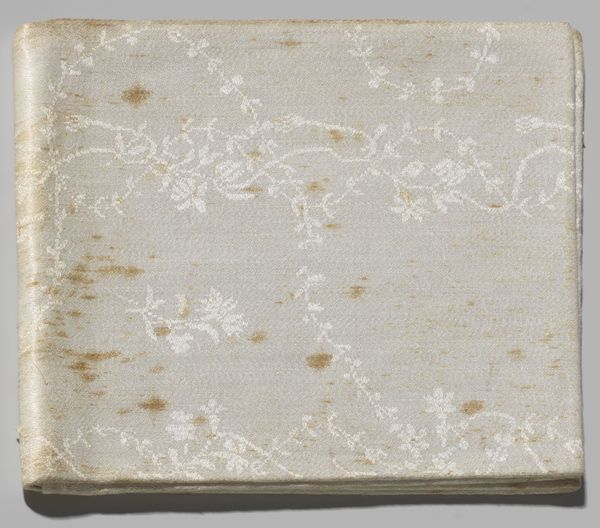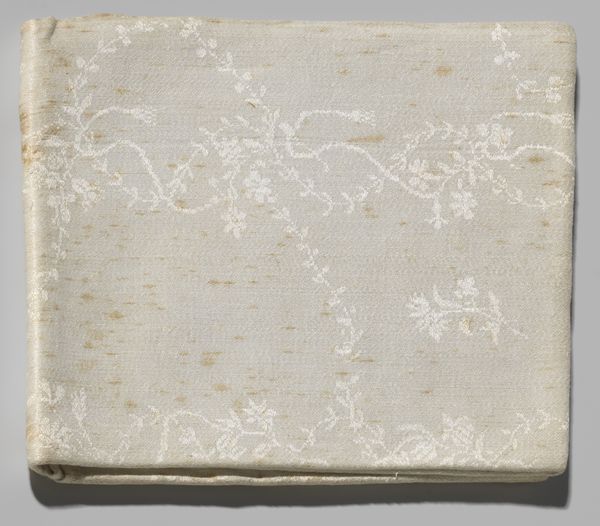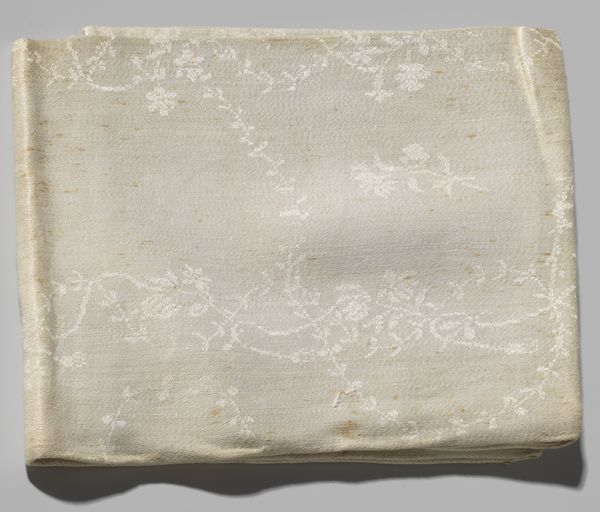
weaving, textile
#
weaving
#
textile
#
decorative-art
Dimensions: length 99 cm, width 84 cm, height 30 cm, width 28 cm
Copyright: Rijks Museum: Open Domain
This elegant napkin, with its floral garland pattern, was created by an anonymous maker, using white linen. The cloth’s appearance results from the inherent qualities of the material and the processes used to transform it. Linen is made from flax fibers, which are spun into yarn, then woven into fabric. The tight weave and smooth surface give linen its characteristic crispness and slight sheen, while the subtle floral design has been integrated during the weaving process. But there's more to this napkin than meets the eye. The production of linen was once a highly skilled craft, often carried out in workshops or homes, involving intricate processes of growing, harvesting, spinning, and weaving. Labor and skill were essential to the making of the linen cloth, where quality and beauty reflected pride of workmanship. Considering the material, processes, and social context of this piece allows us to fully appreciate its cultural significance, challenging traditional distinctions between fine art and craft.
Comments
No comments
Be the first to comment and join the conversation on the ultimate creative platform.
